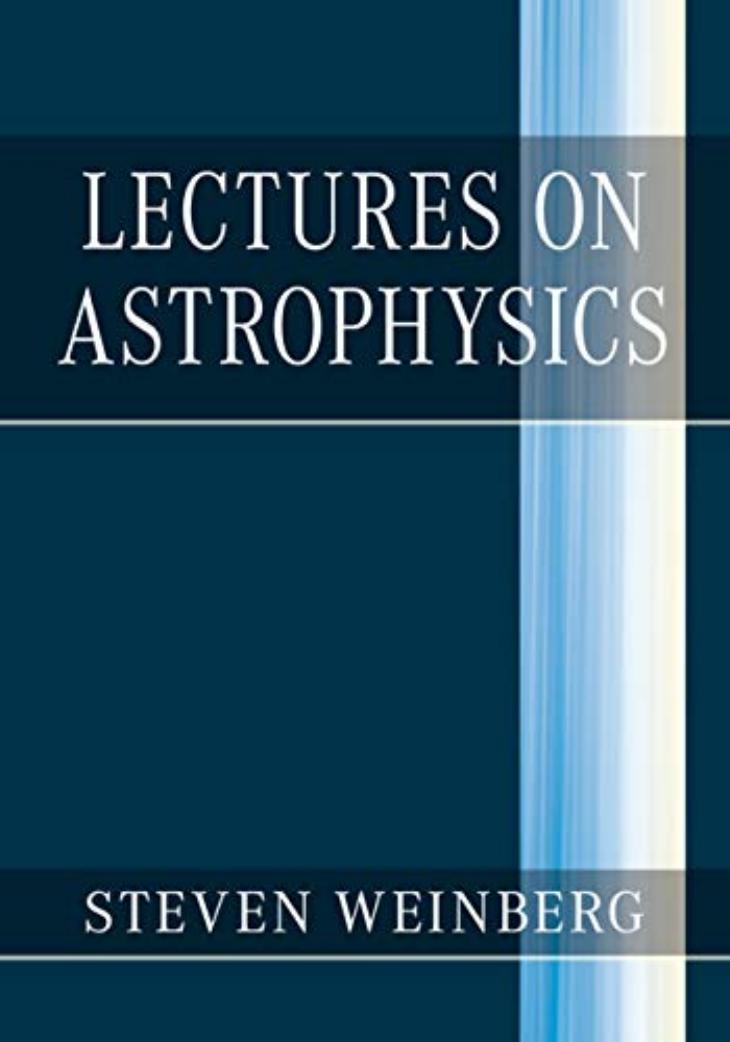Lectures on Astrophysics by Steven Weinberg

Author:Steven Weinberg [Weinberg, Steven]
Language: eng
Format: epub, pdf
ISBN: 9781108415071
Published: 2019-10-10T12:00:00+00:00
which has the first-order solution
(2.4.11)
Thus a gravitational wave produces a change in phase of the electromagnetic wave after traveling an effective distance L back and forth along the direction (perhaps bouncing back and forth many times) equal to
(2.4.12)
We see that when the electromagnetic wave is recombined after traveling effective lengths L1 and L2 back and forth in the interferometer arms along the 1- and 2-directions, the wave will take the form
(2.4.13)
where A1 and A2 are amplitudes that reflect the effects of reflection and transmission along the two interferometer arms, and c.c. denotes the complex conjugate. Since it is harder to observe a small change in the electromagnetic wave intensity caused by a gravitational wave than to observe a weak electromagnetic wave where previously there were none, LIGO was designed to arrange for destructive interference in the absence of the gravitational wave.24 The system is adjusted so that to the greatest extent possible |A1| = |A2| and L1 = L2 â¡ L, and then finer adjustments are made so that in the absence of gravitational waves nearly complete destructive interference is observed in the detector. We then have
(2.4.14)
In the presence of a gravitational wave the destructive interference will not be complete, and to first order in h the amplitude will be
(2.4.15)
That is, if N photons would have been received at the detector during a time 2Ï/Ï if one arm of the interferometer were blocked, so that there is no destructive interference, then the number actually received in the presence of a gravitational wave will be
(2.4.16)
with the components hij evaluated at the position of the interferometer (which we are assuming is small compared with the wavelength of the gravitational wave) and at the time of the measurement.
The detection of a gravitational wave of frequency 2Ω/2Ï is impeded by two main types of background noise, with very different dependence on Ω.
One noise type is ordinary seismic noise, which increases with decreasing Ω. This is minimized by hanging the interferometersâ mirrors on pendula with very low response frequencies, and resting these pendula on seismic isolation tables. Seismic noise can be further suppressed by recording only detections at the two LIGO sites in Louisiana and Washington that arrive in coincidence, within the â 0.01 seconds travel time of a gravitational wave between the two sites. Even so, seismic noise is a serious problem for low-frequency sources, in particular making it impossible to detect a source like the HulseâTaylor binary pulsar with a period of 8 hours.
The other chief source of noise is âshot noise,â arising from the limited number of photons N delivered in a finite time by an electromagnetic wave. This number is subject to quantum fluctuations of order and hence fractional fluctuations of order Since the number of photons arriving during a time of order 1/Ω is proportional to 1/Ω, the effect of shot noise increases with increasing Ω. To mitigate the effects of shot noise LIGO uses a powerful laser, but shot noise is still a serious problem for high-frequency sources.
Detailed calculations
Download
This site does not store any files on its server. We only index and link to content provided by other sites. Please contact the content providers to delete copyright contents if any and email us, we'll remove relevant links or contents immediately.
| Aeronautics & Astronautics | Astronomy |
| Astrophysics & Space Science | Comets, Meteors & Asteroids |
| Cosmology | Mars |
| Solar System | Star-Gazing |
| Telescopes | UFOs |
Tools of Titans by Timothy Ferriss(8301)
Turbulence by E. J. Noyes(7977)
Secrets of Antigravity Propulsion: Tesla, UFOs, and Classified Aerospace Technology by Ph.D. Paul A. Laviolette(5330)
Astrophysics for People in a Hurry by Neil DeGrasse Tyson(5149)
Room 212 by Kate Stewart(5067)
Design of Trajectory Optimization Approach for Space Maneuver Vehicle Skip Entry Problems by Runqi Chai & Al Savvaris & Antonios Tsourdos & Senchun Chai(5036)
Pale Blue Dot by Carl Sagan(4947)
The David Icke Guide to the Global Conspiracy (and how to end it) by David Icke(4653)
A Journey Through Divination and Astronomy by Publishing Pottermore(4363)
Goodbye Paradise(3760)
Apollo 8 by Jeffrey Kluger(3664)
COSMOS by Carl Sagan(3584)
Losing the Nobel Prize by Brian Keating(3518)
The Five People You Meet in Heaven by Mitch Albom(3515)
How to Read Water: Clues and Patterns from Puddles to the Sea (Natural Navigation) by Tristan Gooley(3430)
Brief Answers to the Big Questions by Stephen Hawking(3391)
How to Read Nature by Tristan Gooley(3289)
The Order of Time by Carlo Rovelli(3161)
A Brief History of Time by Stephen Hawking(2990)
